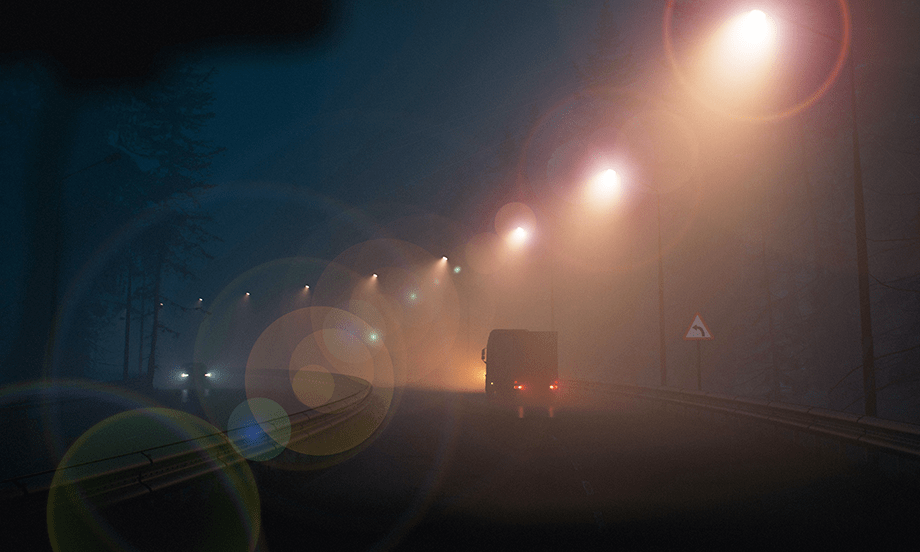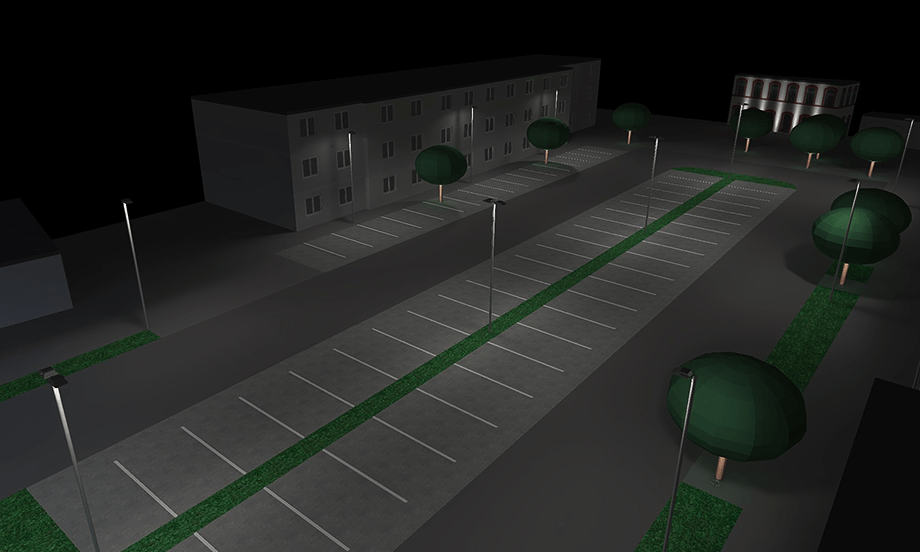Obtrusive light is coming soon

DIALux evo 13 is nearing completion. The release is expected in a few weeks. This version will feature a focus on light immission. This article provides an overview of the key features.
Why obtrusive light?
It is impossible to imagine our modern world without artificial light. Nevertheless, or perhaps because of this, the issues of light pollution and obtrusive light are gaining increasing importance.
Light pollution refers to excessive and misdirected lighting. It not only disrupts the natural day-night rhythm but can also cause serious physiological and ecological problems. It can impair human health by disrupting the sleep-wake cycle and increasing the risk of various health issues.
Additionally, it has profound impacts on flora and fauna: nocturnal animals lose their natural habitats, and plants that rely on darkness experience disrupted growth cycles.

Light pollution is also an energy problem: the energy we use to unintentionally illuminate the surroundings and the sky can be saved. To address these challenges, it is essential to establish clear limits and guidelines for the use of outdoor lighting systems. By limiting light pollution and light emissions, we can not only protect the environment but also improve human well-being.
With the upcoming DIALux evo 13 version, lighting designers can check these limits for free and comply with applicable standards. For our first development step, we have considered the following standards:
- CIE150:2017
- EN 12464-2:2014
- LAI:2012
- ÖNORM O 1052:2022
Which values need to be considered?
One of the most important values is of course the luminous intensity, I[cd]. As an SI unit, it certainly does not need to be explained here.
Glare is a sensation caused by bright areas in the field of vision and can be experienced either as psychological glare or physiological glare. Glare caused by reflections on shiny surfaces is commonly known as veiling reflections or reflective glare. It is important to limit glare for users to avoid errors, fatigue, and accidents.
Glare is difficult to assess as it depends on many individual factors. In outdoor areas, the RG value has been known for some time. We try to quantify individual glare perception through the consideration of luminances and background veiling luminances.
Relatively new is the glare value ks, which also measures glare through the luminances in the field of vision. Unlike the RG value, the solid angle between the observer and the visible light-emitting surface is included in the calculation.
The distance between the luminaire and the emission point is also considered. The k value is found as a proportionality factor in CIE-150, but it is also already included as ks in some national standards and regulations, such as the LAI from 2012 or the ÖNORM O 1052:2022.
Flux ratios
With the RUL (upward light ratio) and the RUF (upward flux ratio), unwanted skyglow can be described.
The RUL sets the luminous flux of a luminaire or lighting system in relation to the directly emitted luminous flux into the sky. It is thus a measure of how well my luminaires are suited for the task or what impact the alignment of my luminaires has on the environment.
The RUF goes one step further: it considers the luminous flux that reaches the sky directly or indirectly through reflection. It is related to the luminous flux that would be minimally required under absolutely ideal conditions to fulfill the visual task.
This ideal case is hard to imagine, making the RUF somewhat abstract. However, it describes unnecessary skyglow more precisely than the RUL, as it takes reflected light into account. The currently very high limit values show how much potential for savings exists.

And the threshold value is…
The impacts on humans and the environment depend greatly on the surrounding conditions. All the mentioned standards incorporate these by using environmental zones and validity periods to set different limits.
Some standards use four environmental zones, while others use up to six different zones or areas.
Zone | Luminous intensity at observer position | |
I | ||
cd | ||
Pre-curfew | Post curfew | |
E1 | 2 | 0 |
E2 | 5 | 1 |
E3 | 10 | 2 |
E4 | 25 | 5 |
Exampe for threshold values
The validity periods also vary from standard to standard. They mostly refer to the time between 6:00 and 22:00, and between 22:00 and 6:00. If the exact usage times are known, they should, of course, be taken into account.
What's next?
In our first DIALux version on light pollution, we will initially only implement the calculation of the new metrics. In the following versions, the topic will be further expanded.
In the second development step, the user will have access to the limit values required by the standards, depending on environmental zones and validity periods. In another step, we will implement the identification of problematic luminaires.
Our goal is not to document the disturbing luminaires, but to identify and solve the problem. Subsequently, additional standards will follow to make light pollution and light emissions accessible to a wide range of users.
This costs… what?
All functions related to light pollution are included in the freely available version of DIALux.
Now it's your turn
What is your opinion? Which standards do you use, what additional needs do you see, and what questions do you have about light pollution.